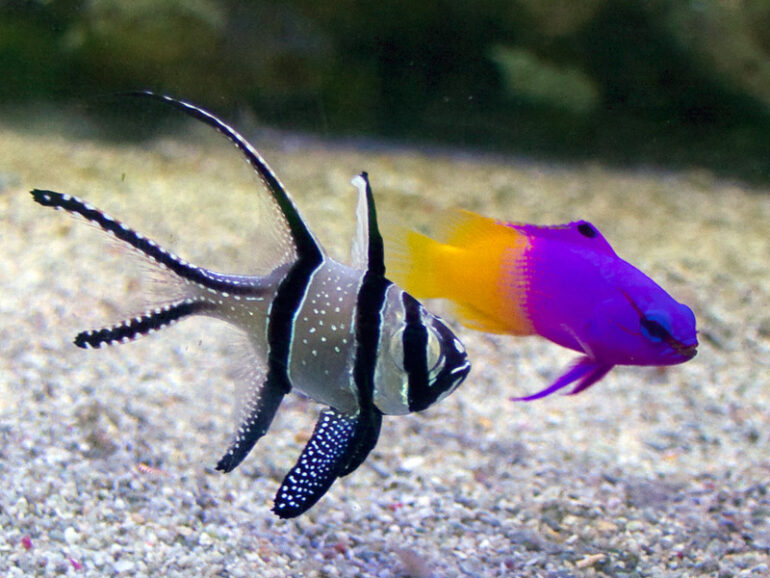On the freshwater tropical fish market, the majority of species sold are captive-bred, either on a large scale by commercial fish farms or by dedicated hobbyists. Relatively few species are still collected in the wild. However, on the saltwater side of the hobby, just the opposite is true. Owing to the considerable challenges associated with breeding and rearing many marine species, most specimens on the market are wild-caught with a smaller percentage being bred in captivity.
The good news is, while we still have a long way to go before we can say the balance has tipped in favor of captive breeding, the efforts of various aquaculture enterprises are really starting to pay off in the form of an ever-expanding list of captive-bred marines.
A small sampling of the captive-bred fishes now available includes various:
- Angelfishes
- Basslets
- Blennies
- Cardinalfishes
- Clownfishes
- Dottybacks
- Dragonets
- Gobies
- Grammas
- Jawfishes
- Seahorses
Why should you care whether the specimens in your aquarium originated on the coral reefs or in an aquaculture facility and why should you support captive-breeding efforts with your dollars? Actually, there are several good reasons:
Sustainability
Captive breeding helps alleviate collection pressure on wild fish populations and the reefs they inhabit. While many marine fishes are sustainably harvested from the wild, the sad truth is, in certain parts of the world, too many are still captured using unethical and highly destructive (to fish and reefs alike) practices such as cyanide fishing.
Also, the wild collection of some species can be considered unsustainable regardless of the technique used. The Banggai cardinalfish (Pterapogon kauderni), for example, has such a limited natural range and population size that almost any degree of wild collection is unsustainable. Fortunately, captive breeding of this species is relatively easy.
Accustomed to captivity
Having been reared under aquarium conditions and raised on prepared aquarium foods, captive-bred specimens are simply much better suited to life in water-filled glass or acrylic boxes and much easier to feed than their wild-collected counterparts are.
Superior hardiness
Wild-collected fish endure quite an ordeal in the chain of custody from the time they’re captured on some far-away reef until they reach your local fish store. Many specimens succumb to the cumulative stress at some point along the way or at their final destination in the hobbyist’s tank. Captive-bred specimens don’t experience these rigors and, therefore, have a much better rate of survival.
More likely disease-free
Specimens bred in captivity are less likely to be exposed to the various pathogens and parasites that plague wild specimens, so there’s a greater chance they’ll arrive in your aquarium in a healthy, disease-free state. However, that doesn’t mean they’re bulletproof! They’ll still get sick if they’re ever placed in a tank that contains (or contained) infected wild specimens.
What did we miss?
If you’ve had experience keeping captive-bred marine specimens and know of additional benefits not listed here, please share them with us and your fellow salties in the comment section below!




The only time wild caught fish make sense is when they are about to die anyway such as the fish I sometimes collect here in New York in the summer. These tropical fish hitch a ride up north on the Gulf Stream and can be easily collected. Their problem is that the Gulf Stream is a one way ticket and millions of fish die each year from the cold. I wish more of these fish would be taken rather than just die in the winter. As far as I know very few people take advantage of these free, very hardy fish.